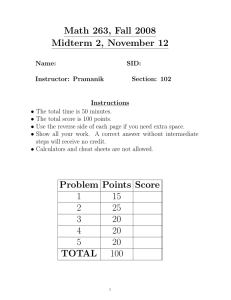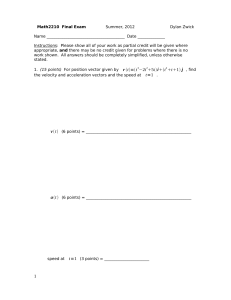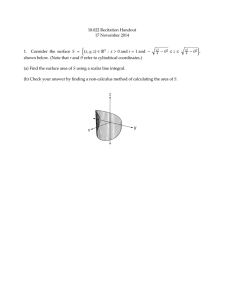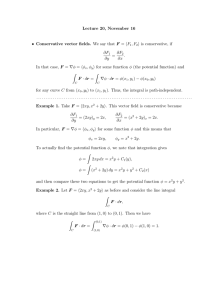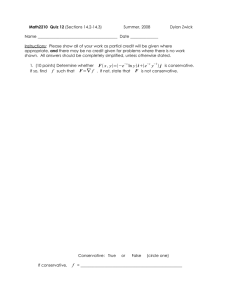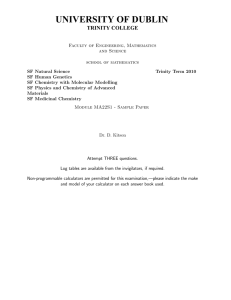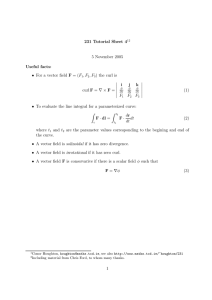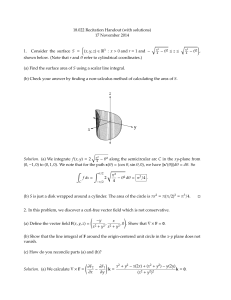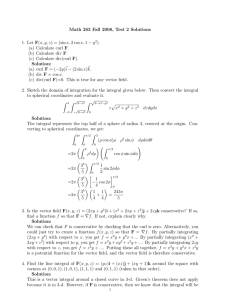18.022 Recitation Handout (with solutions) 19 November 2014 F → R
advertisement
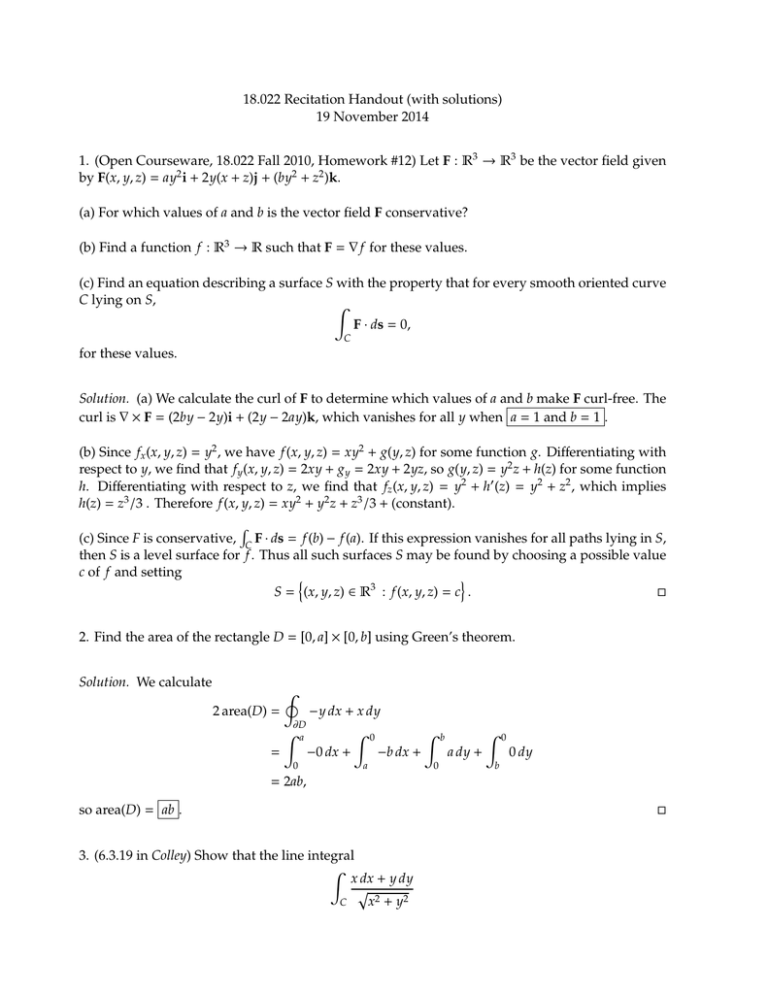
18.022 Recitation Handout (with solutions) 19 November 2014 1. (Open Courseware, 18.022 Fall 2010, Homework #12) Let F : R3 → R3 be the vector field given by F(x, y, z) = ay2 i + 2y(x + z)j + (by2 + z2 )k. (a) For which values of a and b is the vector field F conservative? (b) Find a function f : R3 → R such that F = ∇ f for these values. (c) Find an equation describing a surface S with the property that for every smooth oriented curve C lying on S, Z F · ds = 0, C for these values. Solution. (a) We calculate the curl of F to determine which values of a and b make F curl-free. The curl is ∇ × F = (2by − 2y)i + (2y − 2ay)k, which vanishes for all y when a = 1 and b = 1 . (b) Since fx (x, y, z) = y2 , we have f (x, y, z) = xy2 + g(y, z) for some function g. Differentiating with respect to y, we find that f y (x, y, z) = 2xy + g y = 2xy + 2yz, so g(y, z) = y2 z + h(z) for some function h. Differentiating with respect to z, we find that fz (x, y, z) = y2 + h0 (z) = y2 + z2 , which implies h(z) = z3 /3 . Therefore f (x, y, z) = xy2 + y2 z + z3 /3 + (constant). R (c) Since F is conservative, C F · ds = f (b) − f (a). If this expression vanishes for all paths lying in S, then S is a level surface for f . Thus all such surfaces S may be found by choosing a possible value c of f and setting n o S = (x, y, z) ∈ R3 : f (x, y, z) = c . 2. Find the area of the rectangle D = [0, a] × [0, b] using Green’s theorem. Solution. We calculate I 2 area(D) = ∂D Z a = −y dx + x dy 0 Z −0 dx + 0 b Z −b dx + a Z a dy + 0 0 0 dy b = 2ab, so area(D) = ab . 3. (6.3.19 in Colley) Show that the line integral Z x dx + y dy p C x2 + y2 is path-independent, and evaluate it along the semicircular arc from (2, 0) to (−2, 0). Solution. The integral is path independent because the vector field y x p , p x2 + y2 x2 + y2 p is the gradient of x2 + y2 and is therefore conservative. To evaluate the integral along any path p from (2, 0) to (−2, 0), we just evaluate x2 + y2 at (2, 0) and (−2, 0) and subtract: p (−2)2 + 02 − √ 22 + 02 = 0 .
